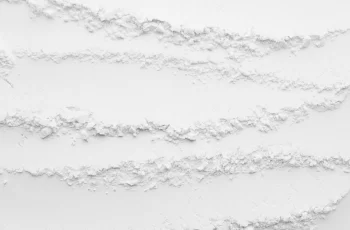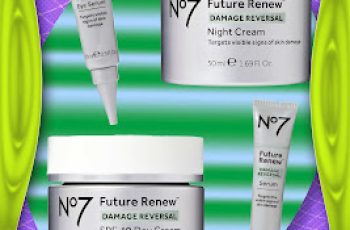
Can Azelaic Acid Be Used with Sunscreen?
In an industry as jam packed as beauty, the chances of missing certain ingredients are highly likely which will probably explain why azelaic acid and its benefits have remained under the radar for quite some time. But this doesn’t mean you wouldn’t reap the rewards when introducing it into your everyday skincare routine.
So, what is azelaic acid, and are we able to use it with sunscreen, let’s investigate further and before we get stuck into finding out more, here is a brief recap of what this unsung hero can do for the skin.
What is azelaic acid?
Azelaic acid is a skincare ingredient that is derived from grains, such as barley, rye, and wheat. Known for its stability within formulations, azelaic acid is favoured by many prone to suffering from conditions such as acne and rosacea. This is because it can reduce inflammation and is able to block the production of pigmentation helping to improve the appearance of dark spots and hyperpigmentation.
You’ll find that azelaic acid is available in an array of percentages strengths, some reaching 20 percent in prescribed formulas. Much lower percentages can be found in over the counter, which many find the best way to start by introducing azelaic acid into your skincare routine. Some other benefits to using azelaic acid are as follows.
Contains skin-soothing properties that can reduce redness and signs of sensitivity
Improves the skin tone making it more even with more clarity
Targets blemishes reducing inflammation and redness
Improves the complexion by reducing dark spots and uneven skin tone and areas of hyperpigmentation
Now that we have had a brief refresher on azelaic acid and how it works on the skin, we can find out more about using it with sunscreen.
Can azelaic acid be used with sunscreen?
Yes, you can use azelaic acid with sunscreen as, unlike other acids it does not increase the skin’s sensitivity to UV exposure. Having said that, it is still strongly advised you apply a daily SPF of 30 and above. This is because azelaic acid still provides exfoliation to the skin which leads to new skin cells sitting on the surface and being more susceptible to UV rays and sun exposure. This over time can lead to deep set skin damage, such as dark spots and hyperpigmentation, it will also cause the appearance of fine lines, wrinkles, and loss of elasticity. You will also find that daily sunscreen creates a physical barrier over the skin ensuring the actives in other products can work undisturbed and protected. This results in you reaping the rewards without the worry of further skin damage.
What should not be used with azelaic acid?
When it comes to an effective skincare routine, it is advised to not mix or layer potent ingredients, such as salicylic acid and other BHAs. This is because there is a high chance of increased skin sensitivity, irritation, dryness, and redness.
As for other ingredients, such as the popular AHA, glycolic acid, vitamin C, and even hydrating powerhouse such as hyaluronic acid. These are all known to work effectively when teamed with azelaic acid, if they are used correctly, leaving enough time in between applications for the skin’s pH levels to rebalance.
You can find out more about what not to use with azelaic acid over on our dedicated blog post.
Should I use azelaic acid before or after moisturiser?
Azelaic acid delivers optimal results when is applied to the skin after your water-based products. By this I mean your cleansers, face washes, and other products. This is easily done if you opt for a product containing azelaic acid that comes as an exfoliating toner or serum, both of which are applied to the skin before your moisturiser.
The general skincare rule is to apply your products from the thinnest to thickest consistency, starting with your cleanser and finishing with a daily SPF. This will ensure all the ingredients are able to work in the correct areas of your skin without having to compete or penetrate through thicker formulations.
What can you layer with azelaic acid?
There are several ingredients that can be layered with azelaic acid, the most effective being niacinamide. By teaming these powerhouses together, you will find any signs of congestion, inflammations, and areas of hyperpigmentation and dark spots are noticeably improved. You will also find that thanks to the unique benefit of niacinamide, sebum production is regulated resulting in both niacinamide and azelaic acid forming an acne banishing duo. Azelaic acid can work at reducing inflammations and redness, whilst niacinamide stops blemishes from becoming worse and preventing new ones developing.
When should azelaic acid be used in a routine?
As I have already mentioned, this is very much dependant on the product azelaic acid is formulated in to. However, you will find that this clever acid is found in such products as exfoliating toners, serums, and moisturiser. This therefore means you apply the ingredient during the later stages of your routine. If you find yourself having some concerns with how to use azelaic acid and whether your skin will benefit from it being introduced into your routine, it’s best to consult with a doctor before applying anything to your skin.
Where does azelaic acid go in routine?
This is very much dependant on the formulation that contains azelaic acid. This will help you establish where in your routine to apply azelaic acid. You will often find skincare products, such as toners, serums, and moisturiser. All of which are used at the later stages of your routine after cleansing the skin.
Where you use azelaic acid in your routine boils down to you and how it works for your skin. Don’t forget if you have any questions, remember to consult with your doctor or dermatologist to find the best product for you and deliver optimal results.
Does azelaic acid lighten the skin?
Yes, azelaic acid can lighten the skin as it can target areas of hyperpigmentation and dark spots. By reducing how dark these areas of concerns are as well as improving the overall look and texture of the skin. Thanks to the antioxidant properties of the ingredient, you’ll find the lipid levels in the protective skin barrier are replenished and healthy. This results in an all-over improved complexion.
As I have already mentioned, azelaic acid provides exfoliation to the skin. Although it’s one of the most versatile ingredients, it is still vital to apply a daily SPF of 30 and above to keep the fresh layer of skin protected from sun exposure.
There you have a little more information about using azelaic acid and sunscreen, don’t forget you can come and follow us on Instagram for more.


